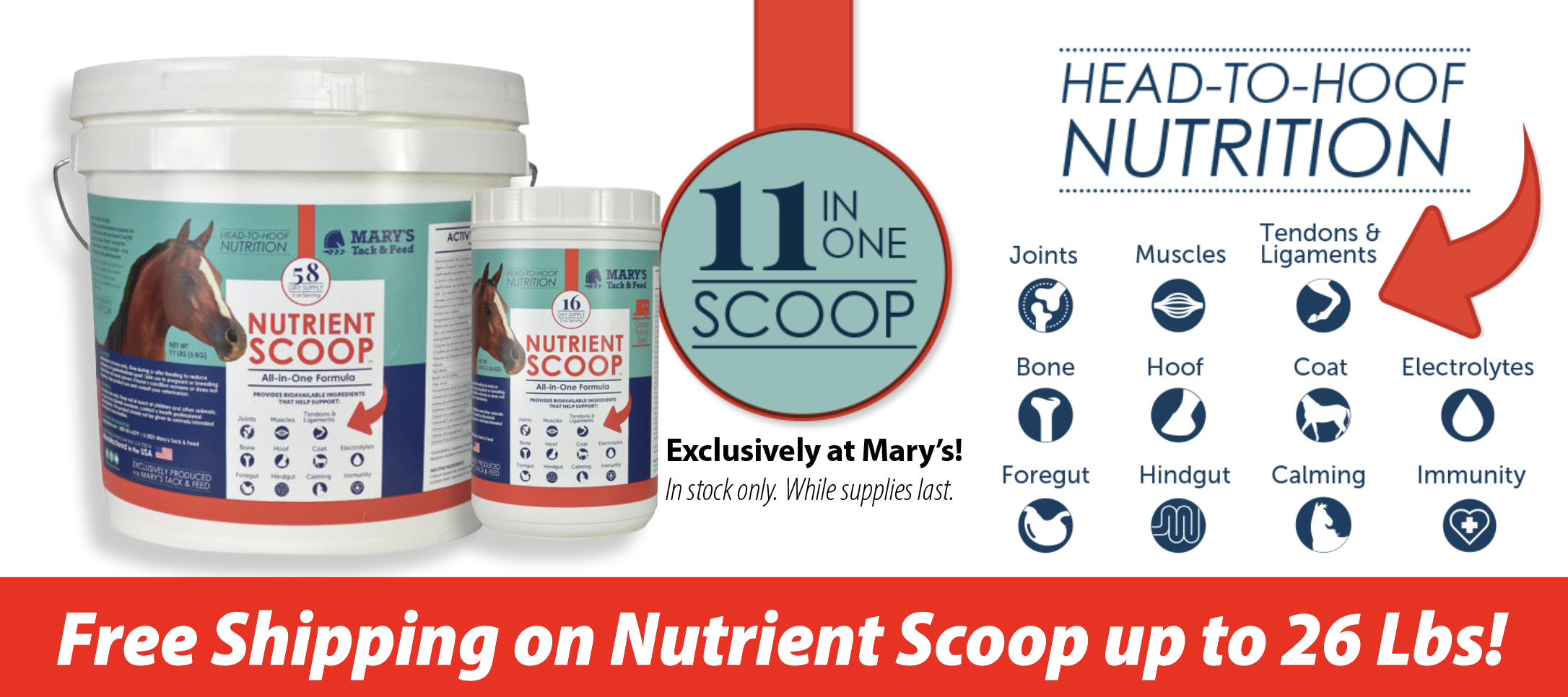The Ultimate Beginner’s Guide to Horse Grooming: A Step-by-Step Approach for Equestrian Care
Posted by Mary's Tack & Feed on 11th Feb 2025
Grooming your horse is an essential part of building a strong bond and ensuring your horse’s health and comfort. This beginner-friendly guide to horse grooming is perfect for new horse owners and novice riders, offering easy-to-follow steps to help you get started. Regular grooming will not only keep your horse looking great but also help you learn more about their body, behavior, and health.
By grooming your horse consistently, you’ll quickly spot changes in their condition. You'll notice differences between normal bumps and new ones, remember where your horse loves to be scratched, and recognize their mood day by day. Additionally, grooming is an opportunity to check for physical issues that could impact your horse’s performance during rides and their overall well-being.
Here’s how to properly groom your horse, step by step:
1. Secure Your Horse for Safe Grooming
Before you begin grooming, it’s crucial to secure your horse to ensure they don’t wander or move around too much. Use a quick-release knot with a lead rope, or secure your horse with crossties if available. If there’s no place to tie them, have a helper hold onto the rope firmly while you groom.
2. Remove Dirt, Dust, and Mud with a Curry Comb
Start by using a rubber curry comb. Use circular motions to loosen dust, dirt, and mud, beginning at the neck and working down the body. This not only cleans your horse but also gives them a satisfying scratch in places they can’t reach. Avoid using the curry comb on sensitive areas like the face and legs.
3. Remove Excess Dirt with a Hard Brush
After loosening dirt with the curry comb, follow up with a hard brush. This stiff brush will remove the dirt and mud that the curry comb has lifted. Use short, firm strokes along the coat, but avoid using it on delicate areas like the face. If brushing the legs, be gentle with the pressure.
 4. Use a Soft Brush for Sensitive Areas
4. Use a Soft Brush for Sensitive Areas
A soft brush is perfect for sensitive spots such as the face, legs, and spine. Use the soft brush in the direction of the coat’s growth to avoid causing discomfort. Smaller brushes work well on the face, while larger ones can be used along the body for a gentle clean.
5. Pick and Clean the Hooves
Cleaning your horse’s hooves daily is crucial for their health. To pick out the hooves, stand next to the horse's leg and slide your hand down to encourage them to lift the hoof. Use a hoof pick to scrape out dirt, starting from the heel corners and working toward the toe. Be sure to avoid digging into the triangular frog of the hoof. (See all hoof tools)

6. Cleaning the Face and Head
For sensitive areas like the eyes, nose, and underside of the tail, use a clean, damp cloth or sponge. It’s important to have separate washcloths for the face and tail area to maintain hygiene.
7. Brushing the Mane and Tail
Brushing your horse’s mane and tail regularly will help prevent tangles and keep them looking beautiful. Use a wide-tooth comb or mane brush to gently work out any knots. Start at the bottom of the mane or tail and work your way up. Always stay close to your horse's body, never stand directly behind them, and be sure to use detangling sprays to help loosen knots gently.
Why Groom Your Horse Regularly?
Learning how to groom your horse properly is key to fostering a healthy relationship with your equine partner. Consistent grooming promotes better circulation, helps distribute natural skin oils, and ensures a shiny coat. It also helps prevent and detect hidden injuries or skin conditions that may need attention. Additionally, a clean horse reduces the amount of dirt that rubs off on tack, making your tack care easier. (See all grooming products)
By taking the time to groom and tack your horse correctly, you enhance their health and well-being while deepening your bond. Keep your horse clean, comfortable, and happy with these simple grooming steps!
OTHER PRODUCTS YOU MAY NEED:
Horse Grooming | Horse Health & First Aid | Hoof Care | Ice Boots & Therapeutic Products | Stable Wraps & Bandages | Skin & Coat Supplements | Horse Vitamins & Minerals | Fly Sprays | Fly Masks for Horses | Fly Sheets for Horses | Fly Boots for Horses | Feed & Bedding | Horse Blankets | Horse Treats | Emergency Supplies




